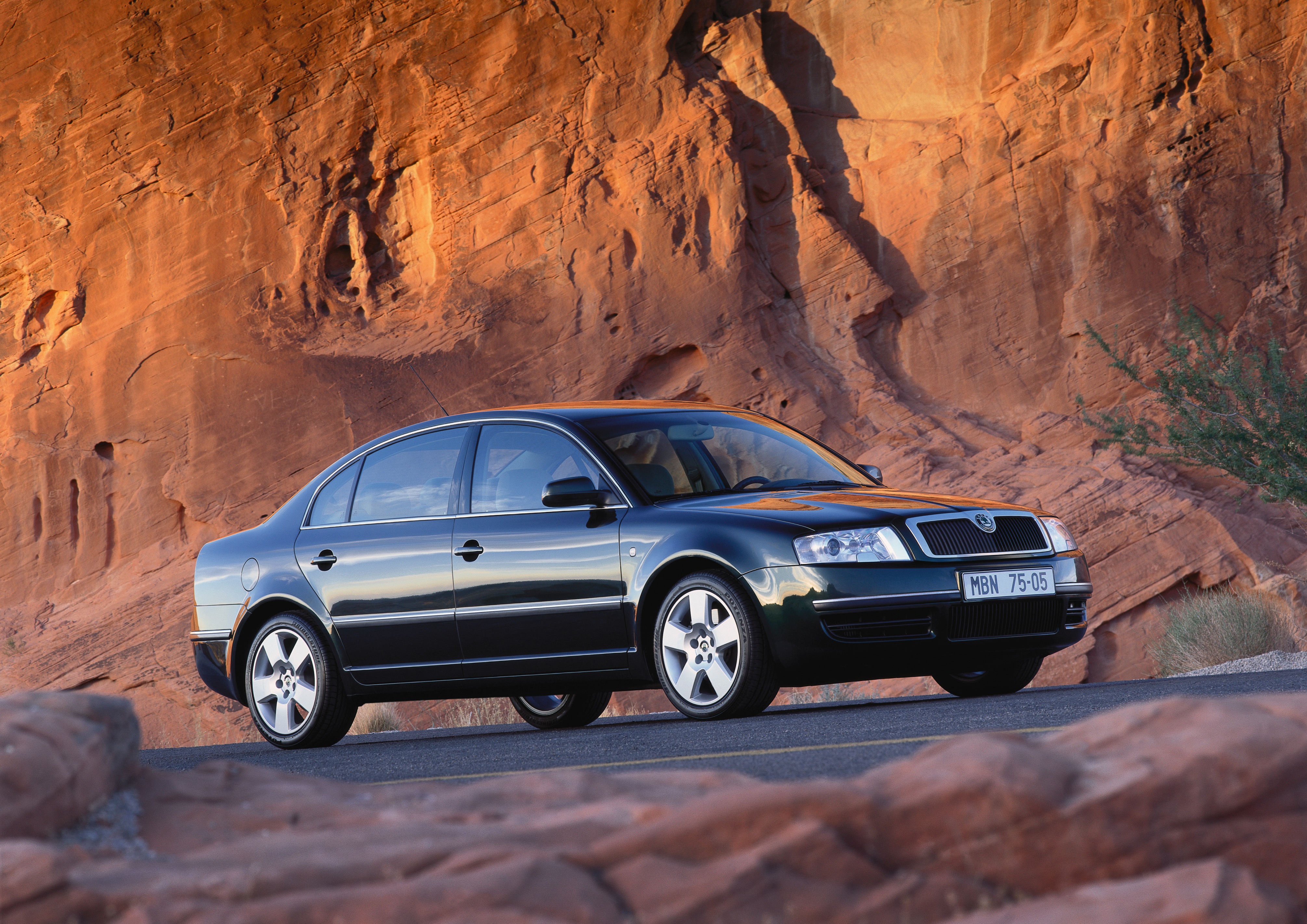An economical and safe giant
Despite its spaciousness and high practicality, the SUPERB also proved to be very economical, especially if the customer opted for the basic 1.9 TDI/130 hp (96 kW) turbodiesel with standardised fuel consumption of 5.7 litres per 100 km. The most powerful of the diesel units had six cylinders, a 2.5 TDI/155 hp (114 kW) engine paired with a six-speed direct-shift gearbox. Both six-cylinder engines also came with an optional five-position Tiptronic automatic transmission.
 The first modern generation of the ŠKODA SUPERB model (2001)
The first modern generation of the ŠKODA SUPERB model (2001)
The ŠKODA SUPERB also added a number of safety features to the Czech brand’s range: the braking system received the standard ABS anti-lock braking system and the EDS electronic differential lock. The ASR anti-skid system came in handy, especially in the case of the turbo-diesels and their considerable torque. The six-cylinder engines came with the ESP electronic stabilisation system with brake assist as standard.
The sedan body protected the five occupants not only with its rugged construction, but also with four standard airbags – specifically two front airbags, plus a pair of side airbags for the front seats. Airbags to protect the occupants’ heads in both rows of seats were already being offered at an affordable extra cost at the time. Bi-xenon headlights with washers were also available, while the more demanding passengers were pampered with electrically adjustable and heated front seats, Climatronic automatic air conditioning and a navigation system with a colour display.

